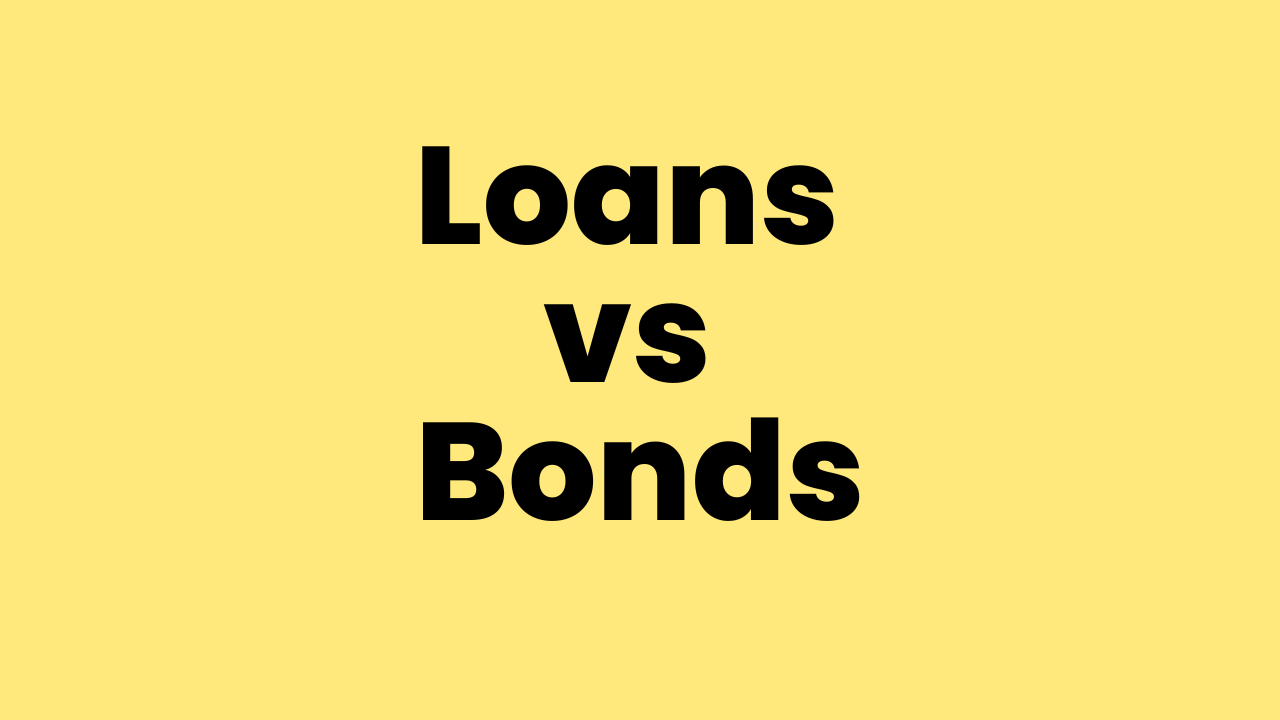In the world of finance, loans and bonds are two primary ways individuals, businesses, and governments secure funding. While both serve the purpose of borrowing money, their structure, terms, and applications differ significantly. Understanding these differences is crucial for making informed financial decisions.
This article explores the definitions, characteristics, advantages, disadvantages, and uses of loans and bonds, alongside a detailed comparison to help you choose the best option for your financial needs.
What Are Loans?
A loan is a financial agreement in which a lender provides money to a borrower with the understanding that it will be repaid over time, typically with interest. Loans can be secured (backed by collateral) or unsecured (not backed by collateral).
Types of Loans
- Personal Loans: Used for personal expenses such as medical bills or vacations.
- Business Loans: Designed for companies to fund operations, expansion, or capital purchases.
- Mortgage Loans: Used to purchase real estate, with the property serving as collateral.
- Student Loans: Customized to help individuals pay for education-related expenses.
Key Features of Loans
- Fixed Terms: Specific repayment schedules, often monthly.
- Interest Rates: Can be fixed or variable.
- Duration: Ranges from short-term (a few months) to long-term (several decades).
Advantages of Loans
- Predictable repayment schedules.
- Accessible to individuals and small businesses.
- Funds are disbursed immediately upon approval.
Disadvantages of Loans
- Interest rates can be high, especially for unsecured loans.
- Missed payments can damage credit scores.
- Collateral may be required for large loans.
What Are Bonds?
A bond is a debt security issued by governments, corporations, or municipalities to raise funds. Investors purchase bonds, effectively lending money to the issuer, who promises to pay back the principal along with periodic interest payments (coupon payments).
Types of Bonds
- Government Bonds: Issued by national governments (e.g., U.S. Treasury bonds).
- Corporate Bonds: Issued by companies to fund operations or expansion.
- Municipal Bonds: Issued by local governments for public projects.
- Convertible Bonds: Can be converted into company stock.
Key Features of Bonds
- Maturity Date: The date when the principal is repaid.
- Interest Payments: Usually semi-annual or annual.
- Tradeable: Can be bought or sold in secondary markets.
Advantages of Bonds
- Regular interest payments provide steady income.
- Lower risk compared to stocks.
- Often tax benefits, especially with municipal bonds.
Disadvantages of Bonds
- Fixed returns may not keep up with inflation.
- Interest rate fluctuations can affect bond prices.
- Limited growth potential compared to other investments.
Key Differences Between Loans and Bonds
Aspect | Loans | Bonds |
|---|---|---|
Borrower | Individuals, businesses, or organizations. | Governments, corporations, or municipalities. |
Lender | Banks, credit unions, or private lenders. | Investors or institutions buying the bond. |
Purpose | Personal or specific business needs. | Raising capital for large-scale projects. |
Repayment | Periodic payments with principal and interest. | Lump-sum principal repayment at maturity. |
Interest Rate | Fixed or variable, agreed upon in the contract. | Predetermined and paid regularly to holders. |
Tradability | Non-tradable; fixed with the lender. | Tradable in secondary markets. |
Collateral | Often required for secured loans. | Typically unsecured but based on credit rating. |
Loans vs. Bonds: In-Depth Comparison
Flexibility
Loans offer greater flexibility for borrowers. The terms of a loan can be negotiated directly with the lender, including the repayment schedule, interest rate, and loan duration. Bonds, however, have standardized terms once issued and cannot be altered.
Accessibility
Loans are accessible to individuals and small businesses, even for modest amounts. Bonds, on the other hand, are typically used for large-scale fundraising by corporations or governments.
Cost of Borrowing
The cost of borrowing through a loan is influenced by credit scores, collateral, and market interest rates. Bonds generally have lower interest rates for issuers with high credit ratings but require significant initial costs for issuance, such as underwriting fees.
Aspect | Best for Loans | Best for Bonds |
|---|---|---|
Small Borrowing Needs | Personal or business loans are ideal. | Bonds are not suited for small borrowings. |
Large Capital Projects | Typically unsuitable due to limits. | Perfect for funding large-scale initiatives. |
Low Credit Scores | Options available but with higher interest. | Not suitable; credit rating significantly impacts cost. |
When to Choose Loans
Loans are better suited for individuals or businesses that:
- Need immediate access to funds for personal or small-scale purposes.
- Are comfortable with fixed repayment schedules and regular installments.
- Prefer direct negotiation with a lender for tailored terms.
When to Choose Bonds
Bonds are ideal for governments or corporations that:
- Require large sums of money for infrastructure projects, expansions, or debt refinancing.
- Want to distribute the borrowing across a wide pool of investors.
- Seek lower interest costs based on a strong credit rating.
Loans vs. Bonds: Impact on Borrowers and Investors
Aspect | Impact on Borrowers | Impact on Investors |
|---|---|---|
Loans | Financial burden due to regular repayments. | Investors do not participate directly in loans. |
Bonds | Longer-term debt with periodic interest costs. | Provide a steady income source and lower risk. |
Loans and Bonds in Economic Context
Loans and bonds are vital components of the financial ecosystem.
- Economic Growth:
Loans enable individuals and small businesses to contribute to economic activity. Bonds fund large-scale projects like infrastructure, stimulating economic growth. - Market Stability:
Bonds provide a safe investment avenue during economic downturns, while loans drive consumption and liquidity in normal conditions.
Final Verdict
While loans and bonds both serve as borrowing tools, their applications, structures, and benefits cater to different needs. Loans are highly customizable, making them ideal for personal or small-scale borrowing. Bonds, with their standardized terms and broad investor appeal, are better suited for large-scale projects and institutional fundraising.
Choosing between loans and bonds depends on factors such as the amount needed, repayment flexibility, and long-term financial goals. By understanding the unique attributes of each, borrowers and investors can make informed decisions to achieve their objectives effectively.

Ranjan is a dedicated finance writer for smartfinclub.com, where he specializes in comparing top financial products in India, including loans, credit cards, savings accounts & more. With a focus on providing clear insights into features, rates, and benefits, Ranjan aims to empower readers to make informed financial decisions customized to their needs.

